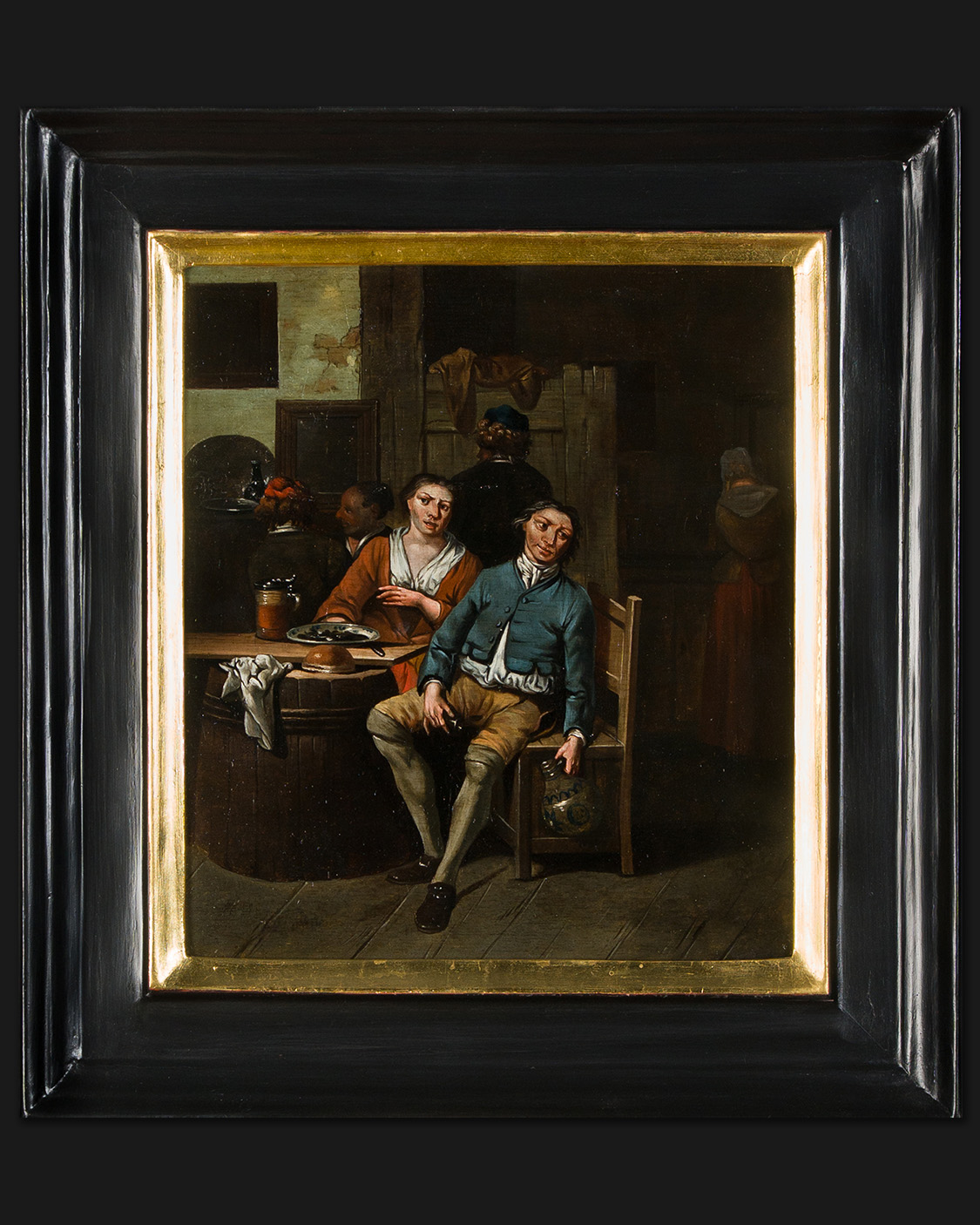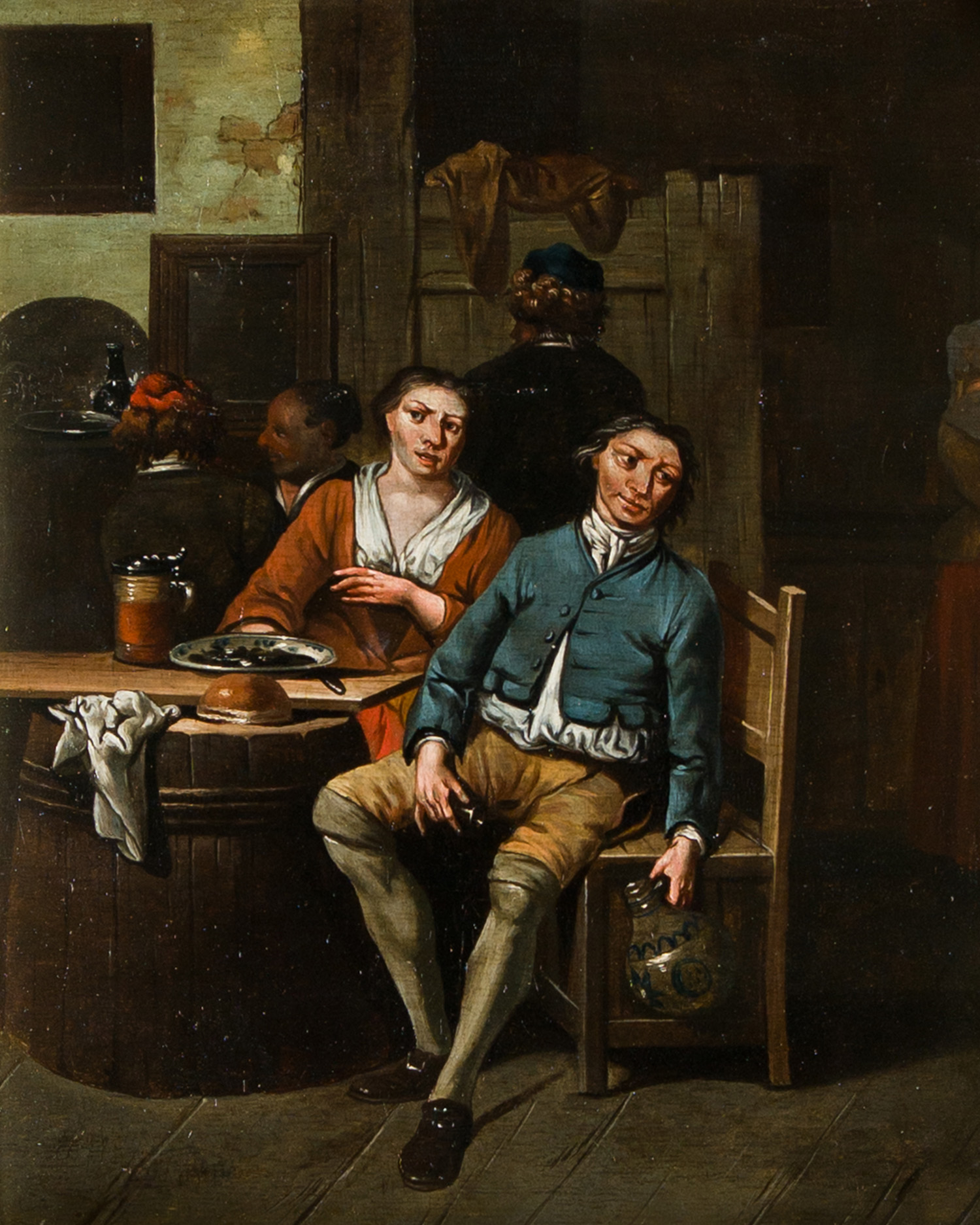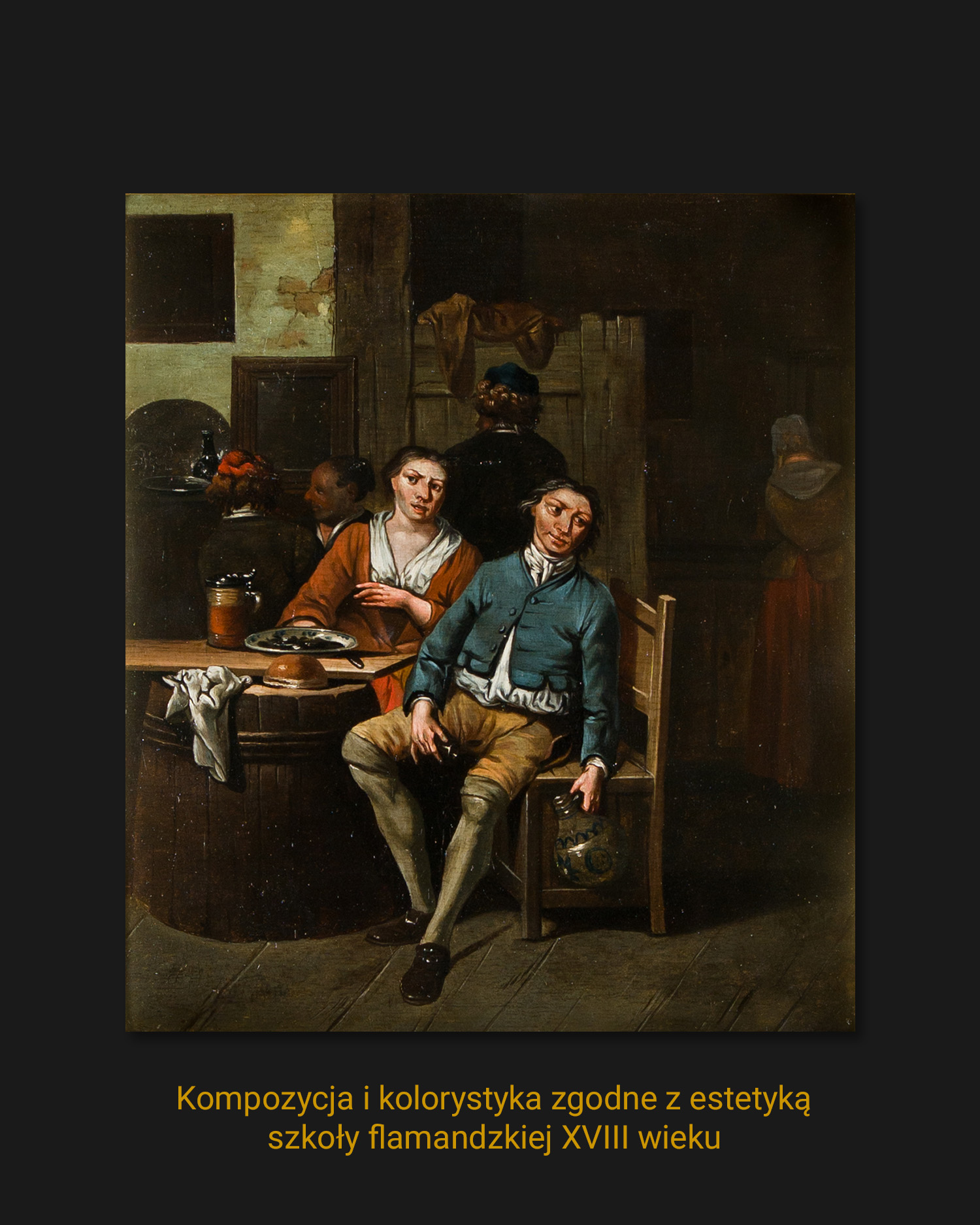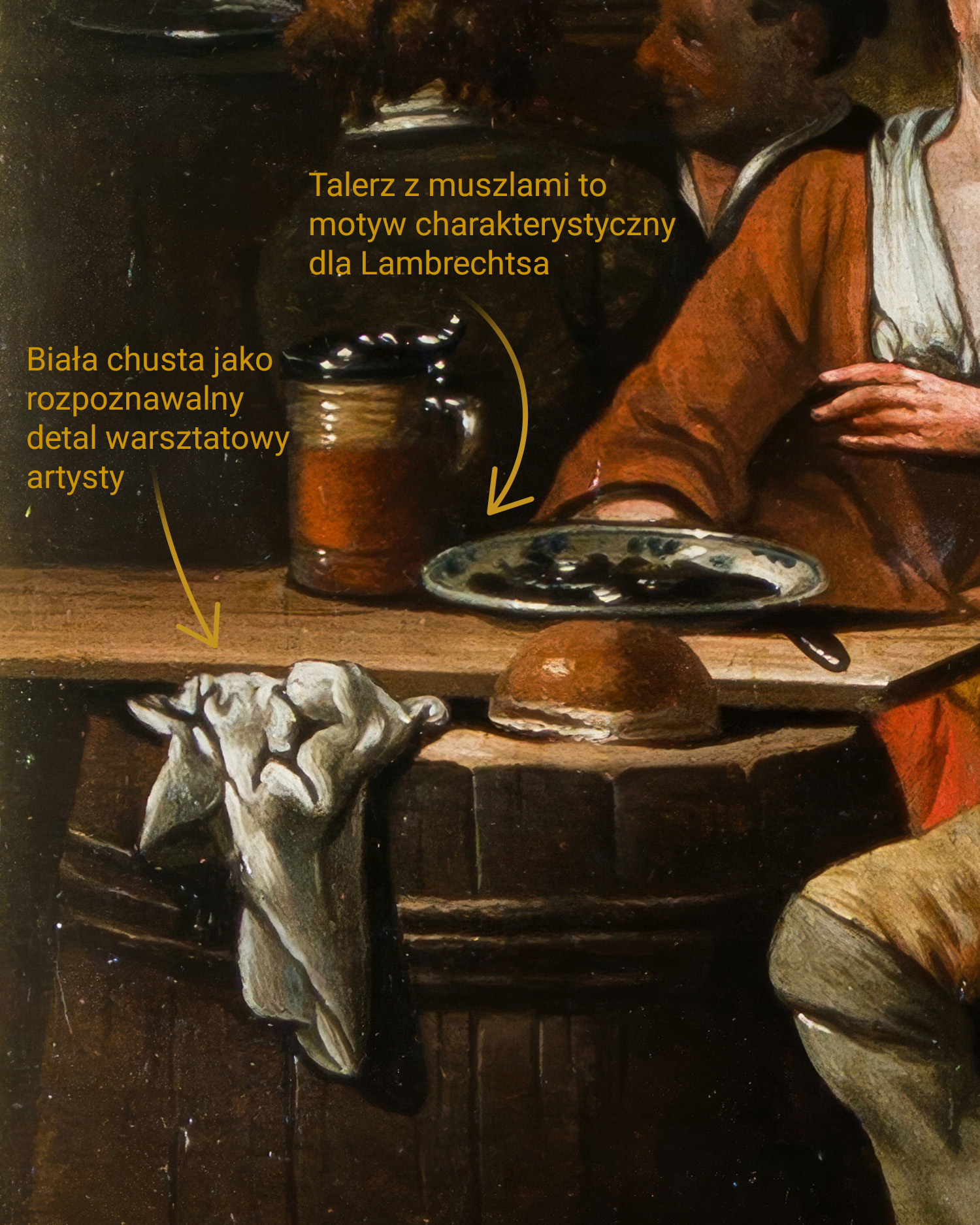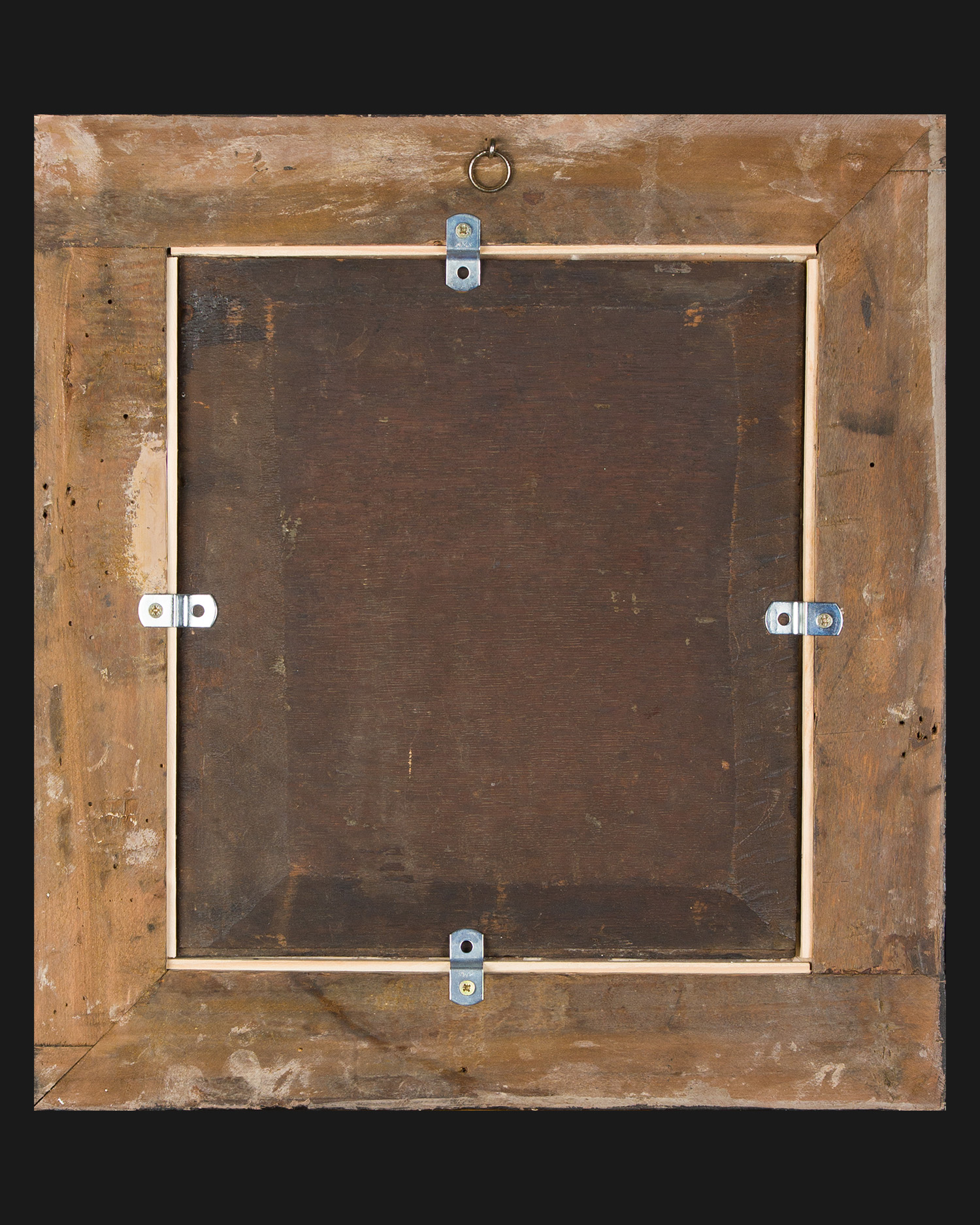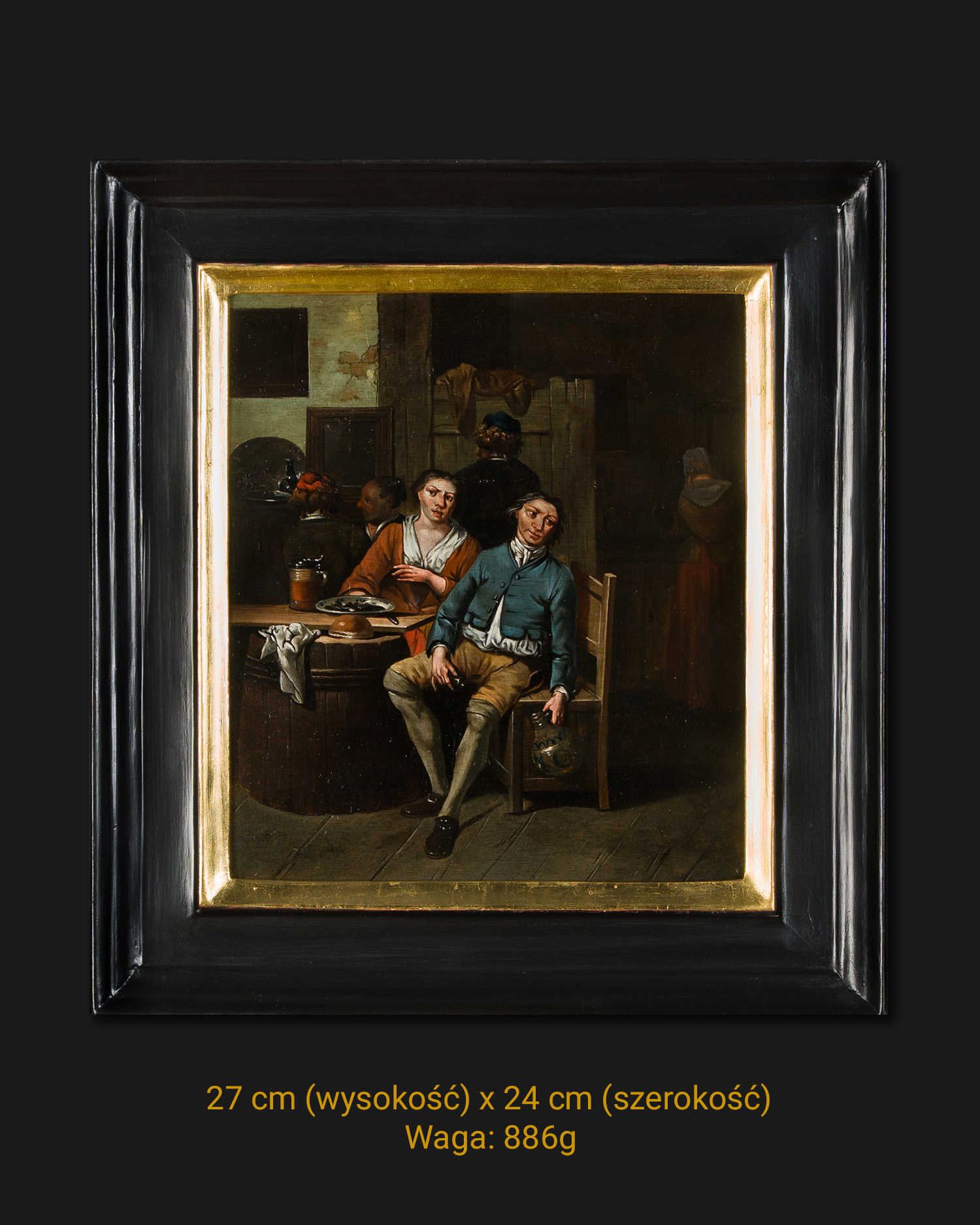






Jan Baptist Lambrechts, Genre scene in an inn, 27 x 24 cm, ca. mid-18th century
875,00 €
An intimate oil painting on board attributed to Jan Baptist Lambrechts, a leading painter of genre scenes of 18th-century Flanders. The composition shows a couple in an inn: the woman turns to the man reproachfully, the man looks away, holding a jug and a glass. The scene alludes to everyday domestic tensions and the problem of alcohol abuse. The painting is distinguished by realistic social observation, the play of light and the artist’s characteristic details like a plate with clamshells and a white scarf. The subject matter and style are perfectly in line with the trend of moralistic bourgeois painting popular in Flanders.
1 in stock
Symbolism
The scene refers to everyday situations of plebeian life, alcohol consumption, female reproaches, social tensions. The woman is depicted as the guardian of morality, while the man symbolizes weaknesses of character. The motif of the jug, glass and plate with shells are recurring elements in Lambrechts' work, often building allusive references to everyday life and customs.
Historical context
Paintings of this type were a popular form of moralizing satire in 18th-century Flanders. They referred to typical social roles and behavior, showing human vices in a realistic but accessible form. They were eagerly collected by the bourgeoisie and the elite, including as an element of reflection on the social condition.


Aesthetic qualities
The work is distinguished by its compositional harmony, sophisticated narrative and theatrical light. Rich details - such as facial expressions, the figure's hands, the scarf on the table and the pottery attest to workshop mastery. The color scheme is consistent, and the chiaroscuro builds the intimacy of the scene.
Collector's value
Lambrechts' paintings are among the classics of Flemish genre painting. Although his subjects are sometimes duplicated, each variant carries an individual story and high craftsmanship.
Application
The work is ideal for display in classical interiors, galleries, museums and hotels and residences with rustic or historical decor. It can also serve an educational function in analyzing the customary and social art of the 18th century. An excellent choice for connoisseurs of Flemish painting and those invested in early art.
Details


White headscarf as a symbol of female control and order in Lambrechts painting
In the paintings of Jan Baptist Lambrechts, the white shawl appearing on the table is not just a still life element, but a sign with symbolic meaning. Placed centrally, between figures and dishes, it indicates the presence of a woman as the guardian of domestic order and morality. In the context of 18th-century Flemish iconography, such a detail refers to social roles in which the woman served as the organizer of daily life. Although seemingly secondary, the white headscarf emphasizes her real impact on the situation depicted in the painting and fits into the subtle narrative of women's control and responsibility in the domestic space.
Looking for a Flemish painting with soul?
At SYBARIS, you'll find paintings like those by Lambrechts and other 18th century masters - perfect for classical interiors and private collections.
Check out our offer and discover art that tells a story.
| Weight | 0,886 kg |
|---|---|
| Dimensions | 27 × 24 cm |
| Type |
Oil painting, genre scene |
| Form |
A multi-character scene inside an inn with a pair of main characters and a group in the background |
| Technika |
null |
| Czas powstania |
18th century (1701-1800) |
| Era |
Rococo |
| Kraj pochodzenia |
Flanders |
| Autor |
Attributed to John Baptist Lambrechts |
| State of preservation |
Very good – painting preserved in very good condition with altered varnish; secondary frame but also 18th century, after conservation. |

